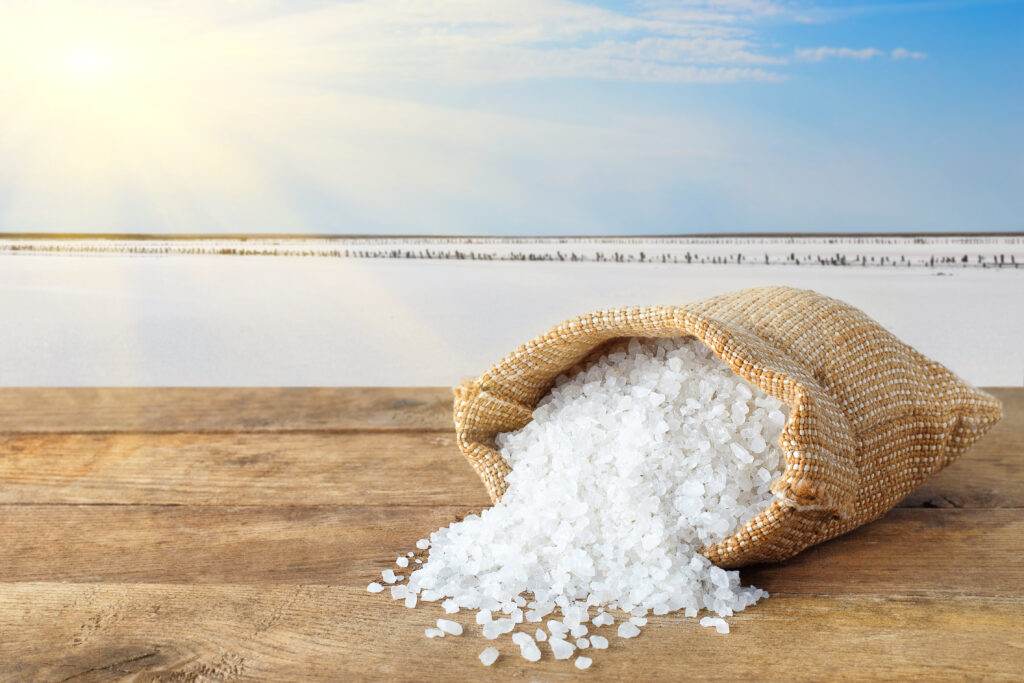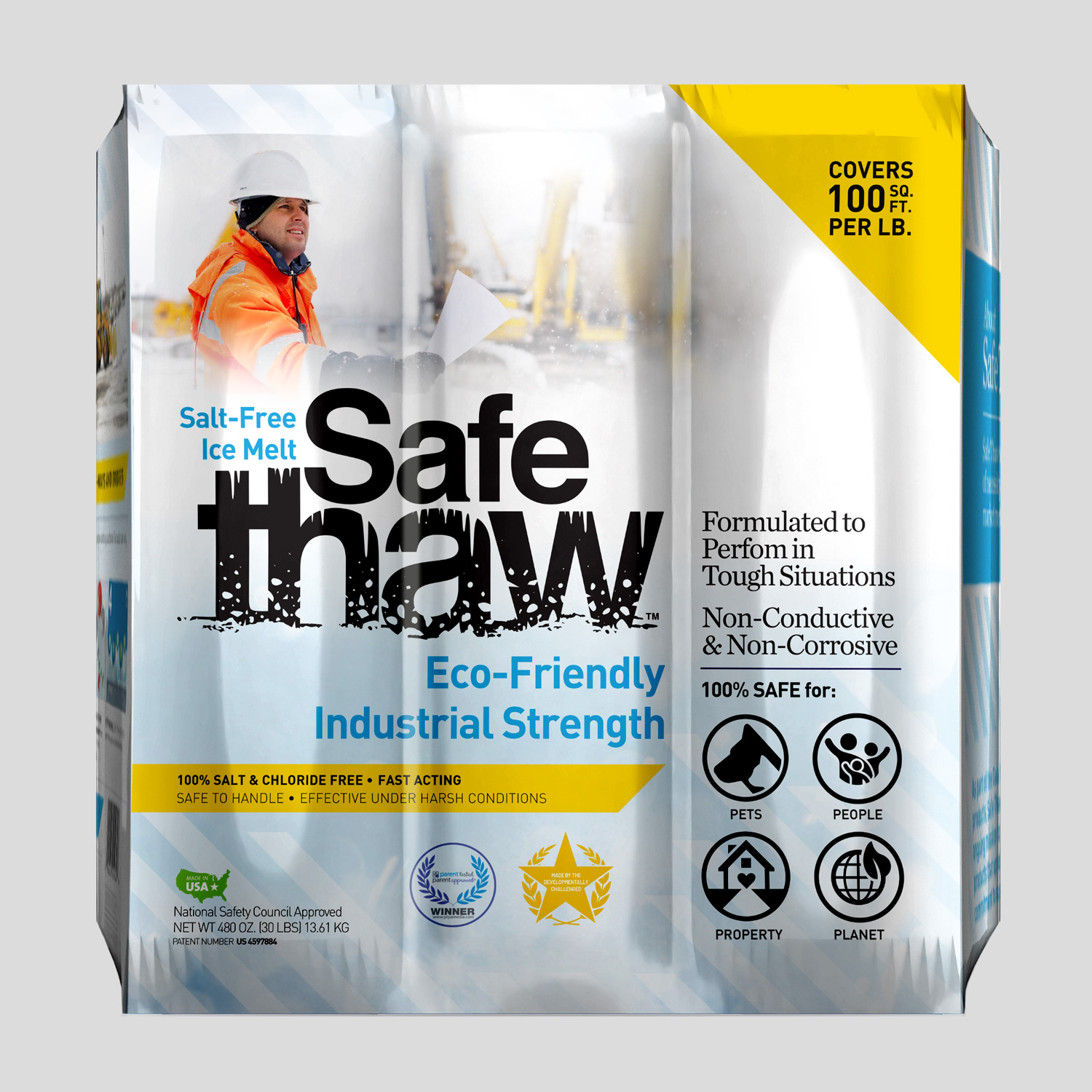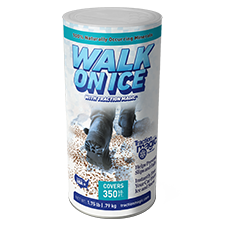Choosing The Right Bags Of Salt For Snow: What You Need To Know

Winter brings a unique set of challenges, particularly when it comes to managing snow and ice. A popular solution has been utilizing bags of salt for snow, but selecting the right one is crucial. This comprehensive guide offers insights into making an informed choice and introduces a groundbreaking alternative for snow management.

Safe Thaw
Safe Thaw was created as the ice management solution for tough winter environments. Ideal in commercial and industrial properties, shops, government agencies, bridges, and construction.
Salt For Snow: A Closer Look
The use of bags of salt for snow is a time-honored method in battling icy conditions. The principle behind this is simple: salt lowers the freezing point of water, thus melting the snow and ice. However, the type of salt chosen can greatly influence the effectiveness and environmental impact.
Variety In Salt Options
In the world of snow removal, several types of salt are available. Each kind, ranging from traditional rock salt to more specialized blends like calcium chloride and magnesium chloride, has its pros and cons. Understanding these differences is key when choosing a bag of salt for snow.
Evaluating The Impact: Beyond Melting Ice
While the efficacy of bags of salt for snow is undeniable, it’s essential to consider the broader impact of these products. Both environmental and infrastructural aspects play a significant role in this evaluation.
The Hidden Costs Of Salt Use
The corrosive nature of salt poses a significant threat to infrastructure. It can deteriorate roads, damage metal structures, and increase maintenance needs. Environmentally, salt runoff leads to water pollution and can damage local flora. These factors are pivotal when assessing the suitability of a bag of salt for snow.
Revolutionizing Ice Management: The Safe Thaw Approach
In response to the drawbacks of salt-based solutions, Safe Thaw emerges as an innovative, eco-friendly alternative. Designed for industrial applications, this chloride-free, toxin-free product redefines effective snow management.
- Environmental Stewardship And Property Safety:
Safe Thaw stands out with its non-corrosive properties, ensuring no harm comes to industrial properties or machinery. Its environmentally conscious formulation aligns with the growing trend towards sustainable industrial practices, addressing the ecological issues posed by traditional bags of salt for snow.
- Reliable Efficacy Across Conditions:
The consistent and long-lasting performance of Safe Thaw’s concentrated formula is a game-changer. It delivers reliable ice-melting action in various weather scenarios, challenging the traditional need for a bag of salt for snow.
- Innovative Composition For Superior Results:
Safe Thaw’s patented formula, a blend of modified crystalline amide core with glycol admixture and traction agents, offers unmatched efficiency in melting snow and ice. This unique combination not only elevates its performance but also eliminates the environmental and infrastructural concerns associated with conventional bags of salt for snow.
What Ice Melt Is Safe For Pets?
After discussing the drawbacks of traditional salts, one question always comes up: what ice melt is safe for pets? It’s not just about protecting surfaces anymore; it’s about protecting those who walk across them. Sodium chloride, calcium chloride, and magnesium chloride might work fast, but their residues can irritate paw pads, cause burns, or even lead to stomach issues if licked off. Many pet owners discover this the hard way after seeing their dog limp or their cat groom excessively following exposure.
That’s why switching to a non-toxic, chloride-free option is critical. Pet-safe ice melt products are designed to work effectively in low temperatures without leaving behind chemical residues. Unlike rock salt, which can slice into sensitive paws and stick to fur, these safer alternatives minimize discomfort and keep the walkway free of harmful chemicals. For families with pets, this small switch means peace of mind every time their furry friends head outside.
What Happens When You Put Salt And Ice On Skin?
If you’ve ever wondered what happens when you put salt and ice on skin, the answer isn’t pretty. It’s essentially a chemical burn. Salt lowers the freezing point of ice, creating a reaction that pulls heat away from the skin rapidly. Within minutes, it can cause frostbite-like injuries, blisters, and lasting scars. Unfortunately, this is sometimes used as a “challenge” online, but the science behind it underscores why chloride-based products should be handled with caution.
Now imagine this same reaction happening on your driveway or deck. When chloride mixes with snow and ice on concrete, it accelerates freezing and thawing cycles that tear into the surface layer, leading to scaling or even cracks. On wood decks, the damage shows up as discoloration, moisture penetration, and premature aging. The risks that harm skin are the same risks that weaken building materials — only the surfaces don’t heal on their own.
Ice Melt Safe For Wood Decks And Pets: Extending Protection Beyond Concrete
A common misconception is that only concrete needs protection from harsh deicers. But what about wood and composite decks? Here’s where choosing ice melt safe for wood decks and pets becomes crucial.
Wood decks absorb moisture more readily than concrete. Chloride-based salts seep into the wood fibers, holding moisture inside and speeding up rot. Composite decks, like Trex, fare better structurally but can still stain or lose their finish if exposed repeatedly to traditional salts. That’s why chloride-free formulas are recommended across the board. They melt ice effectively without corroding screws, nails, or fittings, and they won’t leave behind white streaks or oily residues that ruin the deck’s appearance.
If your property includes both concrete driveways and wooden decks, using one eco-friendly, pet-safe solution ensures uniform protection. No need to juggle different products or worry about cross-contamination between surfaces.
100% salt & chloride-free, fast acting Ice Management Solution
Does Salt Damage Cement? A Common Misunderstanding
The phrase does salt damage cement often comes up in winter conversations, and the short answer is: yes, it does. But it’s not the salt itself eroding the cement chemically — it’s what salt triggers. When salt mixes with snow and ice, it creates salty water that seeps into the pores of cement. During repeated freeze-thaw cycles, this water expands, creating internal pressure that leads to scaling, cracking, and even spalling.
For newly poured concrete, the damage risk is even higher. Cement that hasn’t fully cured is softer and more porous, making it extremely vulnerable. Even after curing, heavy salt use dramatically shortens the lifespan of cement surfaces. Over time, the cost of repairs and resurfacing far outweighs the convenience of spreading a bag of rock salt.
The smarter investment is to use chloride-free ice melt that doesn’t penetrate the cement in the same destructive way. Paired with proper sealing every few years, this approach ensures concrete surfaces last their full design lifespan instead of crumbling prematurely.
Snow Melt That Doesn’t Damage Concrete: What To Look For
So if traditional salt products are out of the question, what should you actually use? Look for snow melt that doesn’t damage concrete. This means chloride-free, non-corrosive formulas designed for commercial and industrial properties, but equally effective for driveways, walkways, and decks.
Here’s what sets them apart:
- Urea-modified formulas that are less aggressive than salts yet still break the bond between ice and concrete.
- Added surfactants and boosters that speed up the melting process even in sub-zero temperatures.
- Residue-free performance so you’re not left with chalky streaks, stains, or corrosive buildup.
- Safe for the environment since runoff won’t harm soil, vegetation, or groundwater.
The efficiency of these products also means you use less material overall, saving money in the long run while protecting infrastructure.
Conclusion
At first glance, grabbing a bag of salt for snow seems like the easiest fix. But when you weigh the hidden costs — from damaged cement and stained decks to pet injuries and environmental harm — it’s clear that traditional salts are more trouble than they’re worth. Asking what ice melt is safe for pets or does salt damage cement leads to the same answer: stick with chloride-free, eco-friendly solutions that protect both people and property.
The long-term benefits extend well beyond aesthetics. Surfaces last longer, repair bills shrink, and outdoor spaces remain safe for everyone — including pets and children. For industrial and commercial properties especially, where liability risks are higher, switching to a snow melt that doesn’t damage concrete is not just a maintenance decision but a safety strategy.
Safe Thaw stands out in this space with its non-toxic, chloride-free formula, delivering reliable performance without compromising on safety. From concrete driveways to wood decks, it’s the smarter, safer alternative to traditional bags of salt for snow.
Try Also Our Other Winter Safety Products:
Safe Paw
The Original and #1 Selling Pet and Child Safe Ice Melt for over 20 years. Guaranteed environmentally safe –It won’t harm animals or children, and it won’t damage your property. That’s Safe Paw. Safe Paw can change how winter affects our planet.

Walk On Ice
The handy disposable canister can be taken everywhere, with the same 100% naturally occurring minerals that provide instant traction on ice or snow. Use it on sidewalks, steps, or as an instant traction agent for your car.



